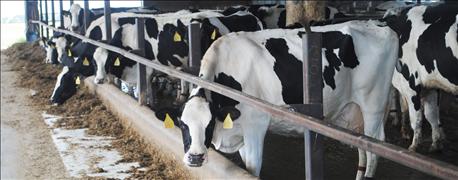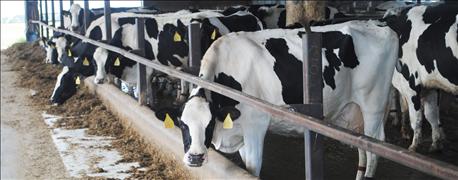
Dairy producers looking to improve their production levels may only have to look at their automatic waterers for a solution to production challenges. That's what Nebraska Extension dairy nutritionist Paul Kononoff told producers at the Nebraska State Dairy Association convention in Columbus earlier this year.
"Water quality may be that 1% that could be holding back your production goals," Kononoff said. "There is lots of data on the impact of livestock production on water quality, but very little on the impact of water quality on livestock."

WATER QUALITY AND DAIRYING: According to Nebraska Extension dairy nutritionist Paul Kononoff, water quality can negatively impact milk production in dairy and overall production for livestock. He suggests sampling water and carefully reviewing the numbers.
Kononoff said that good water should be clear and colorless. It should consist of low total solids and have no disease organisms or pesticides. This good-quality water should not have an undesirable flavor, odor or objectionable gases. While some of these characteristics can be tested by observation, a water test is necessary to truly gauge water quality in the livestock barn.
Water can be a key contributor of nutrients needed by the animal. For instance, water can provide on average 7% of the required calcium and 9% of the required magnesium for a lactating cow. However, not everything in water is beneficial. "Unfortunately, water tests are usually considered 'pass or fail,' while forage tests for instance are an indication of quality," Kononoff said. "You need to understand the numbers in your water test." It takes roughly one-half gallon of water for every pound of milk secreted.
Water quality factors to consider
• Total dissolved solids. Total dissolved solids — the measure of organic and inorganic constituents — is not necessarily enough to understand water quality entirely. "It is more of a pre-indicator," Kononoff said. If TDS numbers are less than 1,000 mg/L, the water is considered satisfactory. Numbers that run over 3,000 mg/L may cause the animals to refuse the water at first, and it may cause temporary diarrhea and lower animal performance. When the TDS numbers get above 5,000 mg/L, the water should not be offered for pregnant or lactating animals. TDS numbers above 7,000 mg/L should not be fed to cattle at all because of potential health problems and poor production results.
• Hardness. Hardness is an estimate of the dissolved minerals in the water. This may impact accumulation of scale, and negatively affect water delivery systems and the cleaning efficiency of milking equipment, according to Kononoff. Soft water would range from 0 to 60 mg/L, while hard and very hard water would have numbers above 121 mg/L and 180 mg/L, respectively.
• Sulfate. Gypsum- or sulfate-bearing minerals in the soil and rocks are considered one of the origins of sulfate in the water. Sulfate negatively impacts water and feed intake, Kononoff said. It may also reduce the availability of other important water minerals, including calcium, zinc and iron. If the sulfate numbers are over 500 mg/L, you should check for specific salt or sulfates. The numbers should not exceed 500 mg/L for calves and 1,000 mg/L for adult cows. If the numbers are high, producers can offer additional trace minerals, especially copper in the chelated form.
• Iron. High amounts of iron may result in high iron in the blood of livestock and may impair the absorption of copper and zinc, said Kononoff. This may result in oxidative stress in cows with a compromised immune system. A caution level of iron would be in excess of 0.3 mg/L.
Producers should also pay attention to manganese numbers, as well as potentially high numbers for arsenic, nitrates, uranium and high bacteria counts. You can learn more about the importance of water quality by contacting Kononoff at 402-472-6442 or at [email protected].
About the Author(s)
You May Also Like






